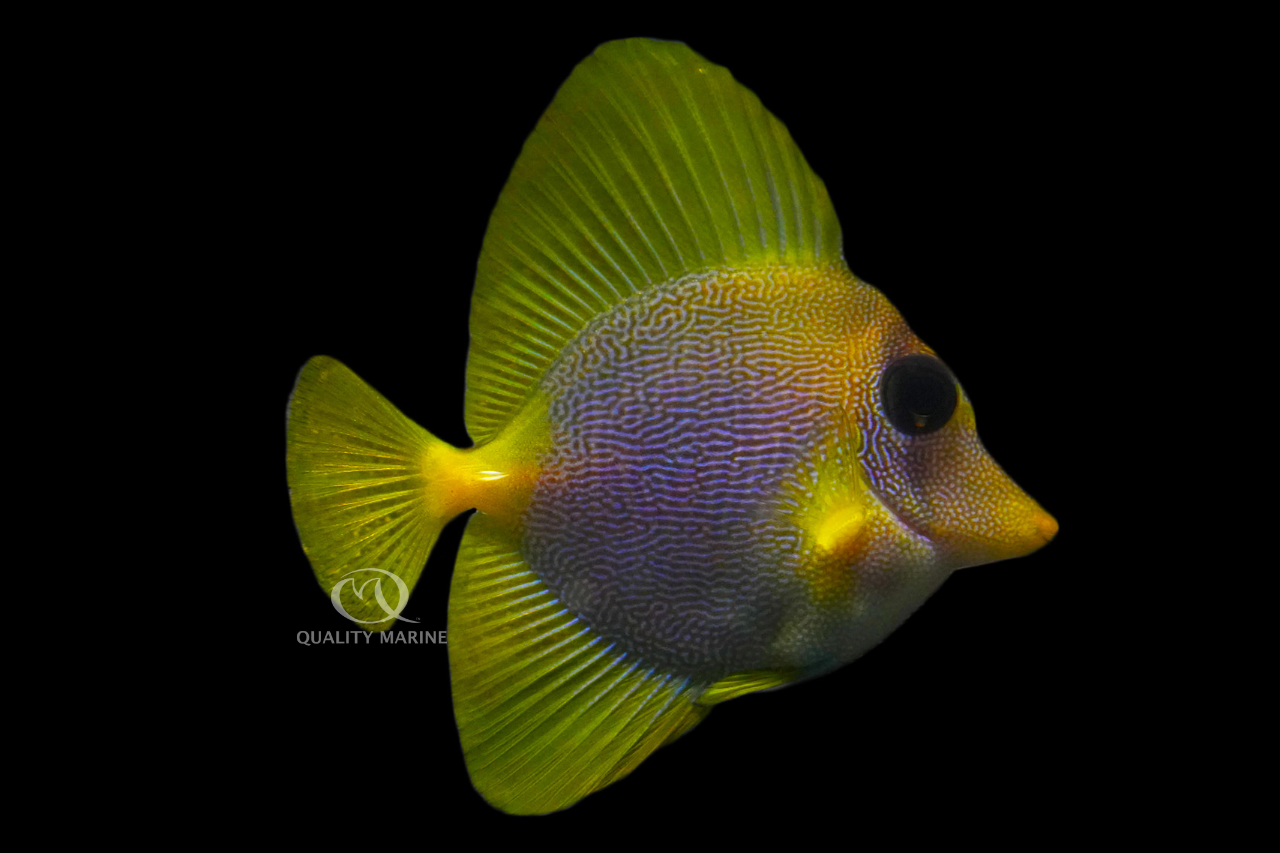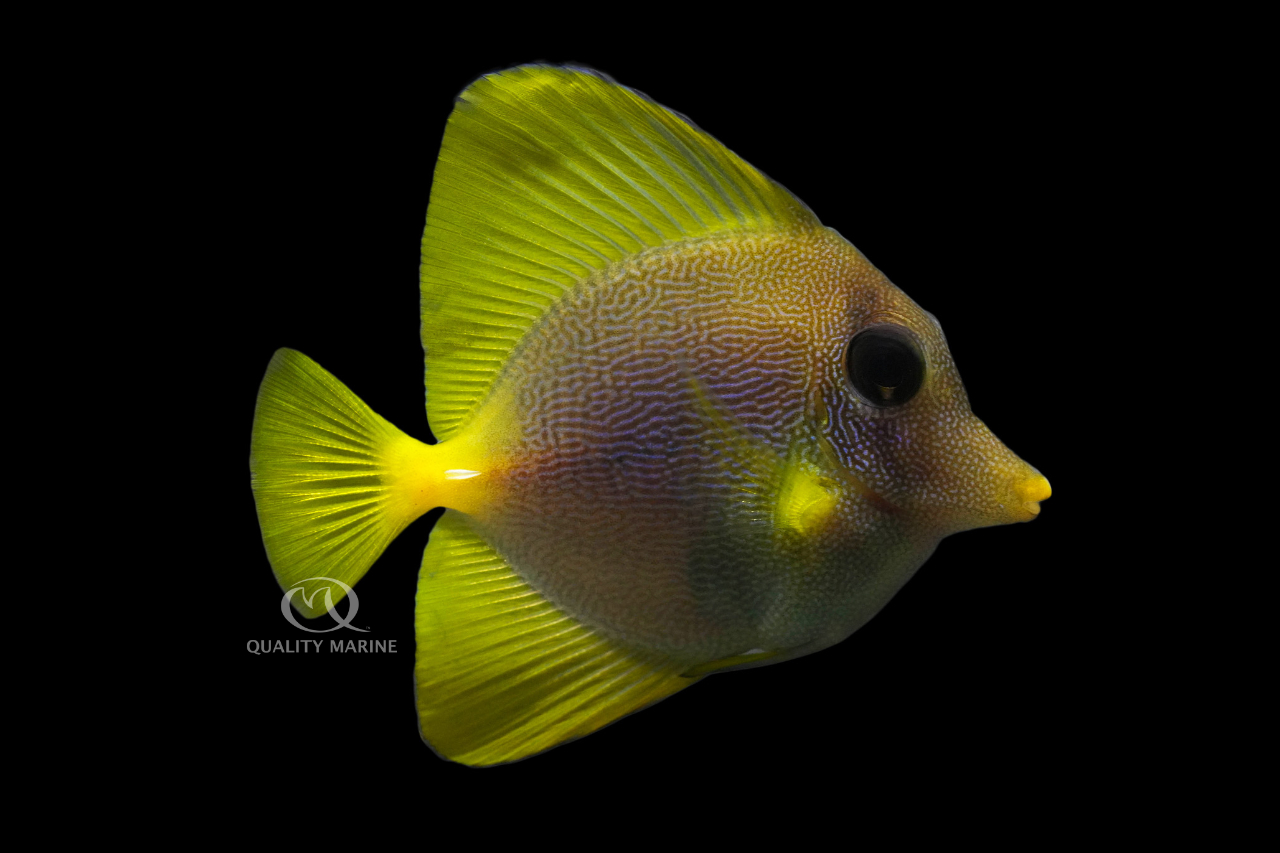Yellow x Purple = Yurple!

If you're a Zebrasoma fish ultra geek (like most of us), you've heard the term “Yurple Tang” in hushed tones. If you're a budding fish geek who hasn't heard of it, today's your lucky day. Tangs (or surgeonfish) are immensely popular in aquariums for their amazing colors, high activity, good durability and unsurpassed appetites for a variety of nuisance algae species. As a result, they have been on the list of fish everyone was hoping would be aquacultured someday and a few years back, against all odds and through a laundry list of seemingly insurmountable factors, it was finally done (which is another story, but one you can read about here on our website).

Never one to rest on their laurels, Bali Aquarich then took this one breathtaking step further, and hybridized two of the world's most popular species, the always stunning Yellow Tang (Zebrasoma flavescens) native to the waters of Hawaii and the rare and uber-desirable Puple Tang (Zebrasoma xanthurum) native to the portions of the Indian Ocean and the Red Sea. Unlike many wild hybrids that we occasionally see, these two species are separated by thousands of miles and will never have the opportunity to hybridize in the wild, meaning that these captive bred fish are the only ones to ever exist!
The results of this happy union are more beautiful than we even imagined, as juveniles, they have a body and fin edges of a fine porcelain blue, with yellow fins. What really gets us is the patterns; they look almost like a finely patterned Scopas Tang mated with a Gem Tang, giving us the look of four of the most famous tangs and all of their best attributes. As small as they currently are, these colors are somewhat muted, and only time will tell how they darken over time. All the fish in this genus develop stronger colors and patterns as they age, and so we assume these fish will as well. Exactly how this works out in the end will just be a test of patience!
Both these parent species are hardy in the home aquarium given enough space, flow, and good nutrition. Space and flow are just a matter of hardware, but getting these fish adequate nutrition was a failing point for many aquarists before the advent of really well rounded, high quality processed foods. They are often (and erroneously) described as living almost entirely off algae, and while this is an important part of their diet, they consume an incredible amount of protein from the little invertebrates living in those algae. This fact was a common oversight among early tang keepers and that fact alone gave these fish an undeserved reputation for being difficult to keep. We feed our Yurples (and all the other Tangs here) a mix of Nutramar Foods, starting with the Algae and Color Boost Shots and Pellets.

Wild fish will learn quickly to eat these foods, and these cultured fish have been conditioned to them since their mouths were big enough to eat pellets. The shots are a perfect food for both wild and captive fish as it allows aquarists to stick food to rocks and glass, giving the tang something to graze on, which is a natural behavior. Getting them enough marine based roughage is also an important aspect of keeping them healthy, and to that end they all get Nutramar Ogo and Nori. This is soaked in tank water to re-hydrate it before being fed in clips, which helps the algae to stick together more naturally and makes it more digestible. Some aquarists also soak their algae in nutrient solutions, but we've found this to be unnecessary if they are also getting a quality pellet or shot.
In regard to tank size, an adult Purple Tang would need a tank that was six feet long (and thus 125 gallons or more), and while the Yellow Tang stays a little smaller, that would be a good tank size for one of them as well, so it makes sense that we're recommending a display this big or larger for the Yurple too. There should be plenty of rocks for hiding, swimming through and grazing on, but Tangs also need plenty of open space, which makes for some really great aquascapes. It's difficult to be able to supply too much flow for a Zebrasoma Tang and you'll see them happily swimming into the biggest flow devices you can put in the tank. Yurple Tangs aren't big jumpers, but we still recommend putting a cover on your tank, as a startled fish can always jump on accident, and you don't want the pinnacle of ornamental aquaculture on your floor.
Exact water quality isn't really a catch point for keeping Yurples, but stability is still a key aspect of successful husbandry for any Tang, cultured or otherwise. A nice high pH between 8.0 and 8.4 is perfect, specific gravity should be within a point of 1.025. Temperature wise, you should maintain your tank somewhere between 72 and 78, and the middle of that range will help you maintain a nice high dissolved oxygen level. Aim for nitrate levels under 5ppm; you don't need or want to have zero nutrients, but barely registering is a win (and a sign your feeding, filtration and water changes are all in sync.)
This is among the rarest tangs to ever grace a fish tank, rivaling even the Gem Tang in its desirability and unobtainable stature. That being said, as of the writing of this article in the end of February 2024, we have a limited number of them in stock! If your tank is ready for the ultimate showpiece fish, the time is now. Head to your Local Fish Store and tell them you're ready for an aquacultured Yurple Tang from Quality Marine today!